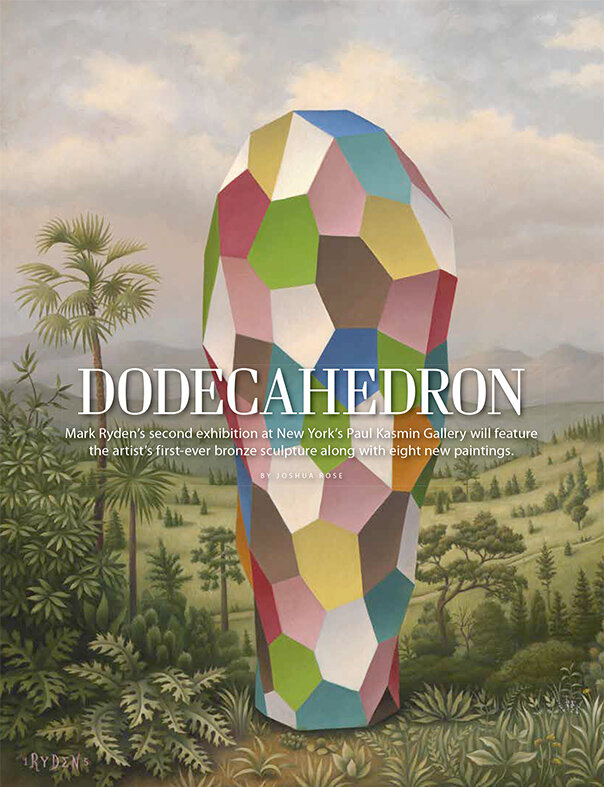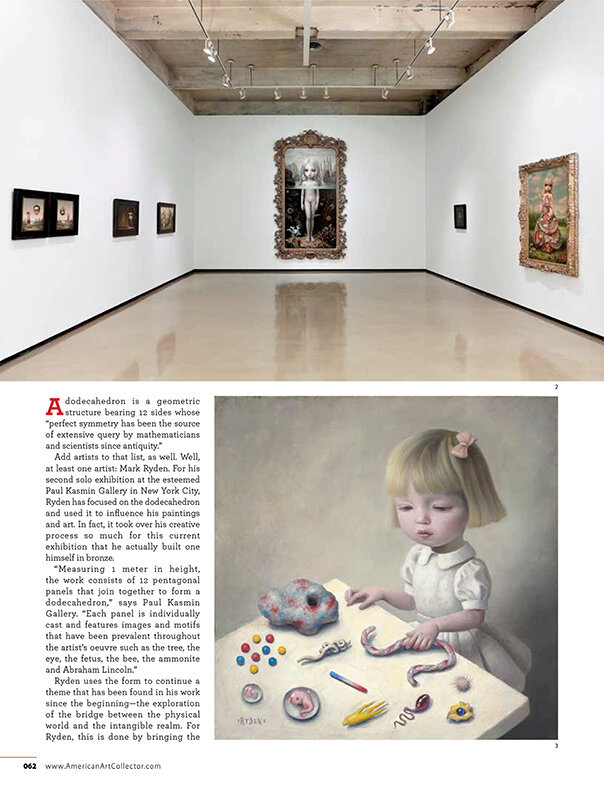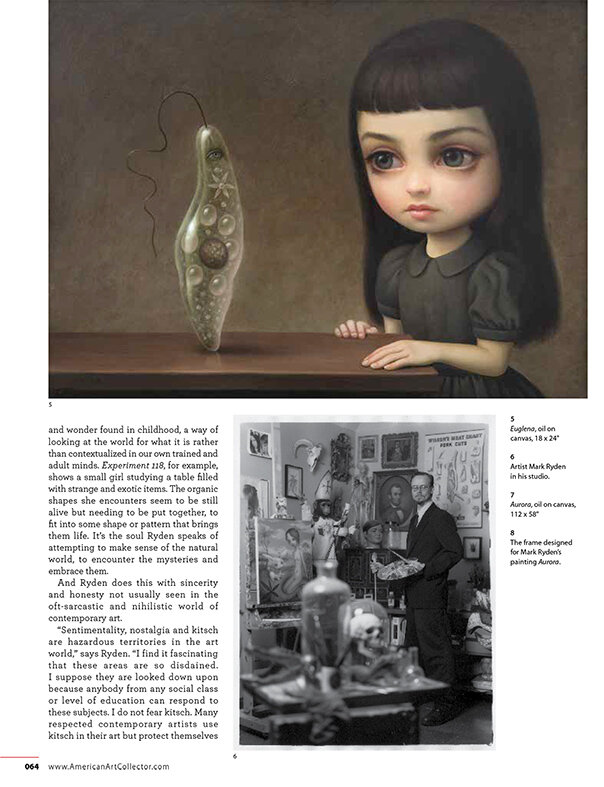American Art Collector
Dodecahedron
Mark Ryden’s second exhibition at New York’s Paul Kasmin Gallery will feature the artist’s first-ever bronze sculpture along with eight new paintings.
By Joshua Rose
A dodecahedron is a geometric structure bearing 12 sides whose "perfect symmetry has been the source of extensive query by mathematicians and scientists since antiquity."
Add artists to that list, as well. Well, at least one artist: Mark Ryden. For his second solo exhibition at the esteemed Paul Kasmin Gallery in New York City, Ryden has focused on the dodecahedron and used it to influence his paintings and art. In fact, it took over his creative process so much for this current exhibition that he actually built one himself in bronze.
"Measuring 1 meter in height, the work consists of 12 pentagonal panels that join together to form a dodecahedron," says Paul Kasmin Gallery. "Each panel is individually cast and features images and motifs that have been prevalent throughout the artist's oeuvre such as the tree, the eye, the fetus, the bee, the ammonite and Abraham Lincoln."
Ryden uses the form to continue a theme that has been found in his work since the beginning—the exploration of the bridge between the physical world and the intangible realm. For Ryden, this is done by bringing the mystery of the natural world into focus. Ryden's hidden realms aren't so hidden, rather than typically ignored by most passersby. But, they are the realms that have always served as a source of inspiration for artists—the inner worlds of the human body (Anatomia), the external natural environment (Chroma Structure 113), and the hidden undersea world (Aurora). Ryden holds a microscope to these natural worlds, and the curves and bends of an intestine, the spindling branches of a piece of coral, and the patterning of various leaves and shrubs all are brought into focus to capture our attention.
"The vocabulary of images in Ryden's new body of work remains consistent with his pervasive distortion of scale and his iconic fairy tale-like creatures set against seductive landscapes of untouched beauty," says the gallery. "The artist's paintings focus on the 'soul confronting its physical form' as represented by his recurring feminine child figure, he calls 'anima' or 'soul' figure."
This feminine anima figure is of central importance to Ryden's paintings and relates to both his own self as an artist and his unconscious mind.
"In the Jungian school of thought, anima is the feminine aspect of the male unconscious mind—the counterpart to animus, the masculine part of the feminine unconscious mind," says Ryden. "At some point, my wife, Marion, conjectured that the recurring female figure in my paintings was really a self-portrait. This was very insightful, and I had to agree. In that way, the recurring figure is my anima. In a more general way, she is simply the soul, relating to anyone looking at my paintings."
Many of Ryden's paintings approach his subject through a sense of innocence and wonder found in childhood, a way of looking at the world for what it is rather than contextualized in our own trained and adult minds. Experiment 118, for example, shows a small girl studying a table filled with strange and exotic items. The organic shapes she encounters seem to be still alive but needing to be put together, to fit into some shape or pattern that brings them life. It's the soul Ryden speaks of attempting to make sense of the natural world, to encounter the mysteries and embrace them.
And Ryden does this with sincerity and honesty not usually seen in the oft-sarcastic and nihilistic world of contemporary art.
"Sentimentality, nostalgia and kitsch are hazardous territories in the art world," says Ryden. "I find it fascinating that these areas are so disdained. I suppose they are looked down upon because anybody from any social class or level of education can respond to these subjects. I do not fear kitsch. Many respected contemporary artists use kitsch in their art but protect themselves with an ironic posture. I am striving for something more complex; I try and combine irony with a degree of sincerity. I believe kitsch is a domain that holds the powerful universal archetypes of the collective consciousness."
And this is something that Ryden achieves, whether it be a 6-foot oil painting or a work in miniature.
"My large paintings are colossal undertakings because I finish them off with an intense degree of finish and with tiny brushes," says Ryden. "I want large paintings to work at both a macro and micro scale and read well at a distance, but engage the viewer as they approach closer and closer with discoveries to be made at each level of investigation."







